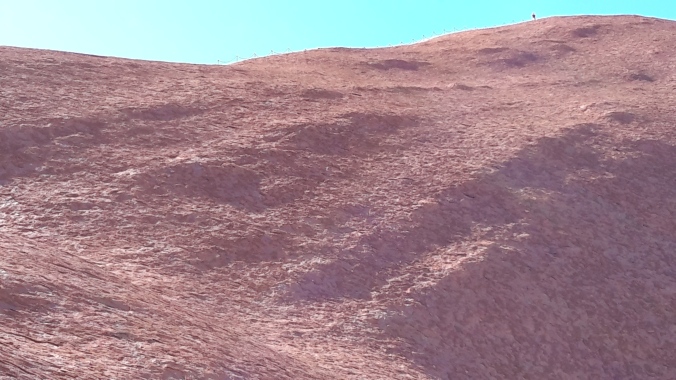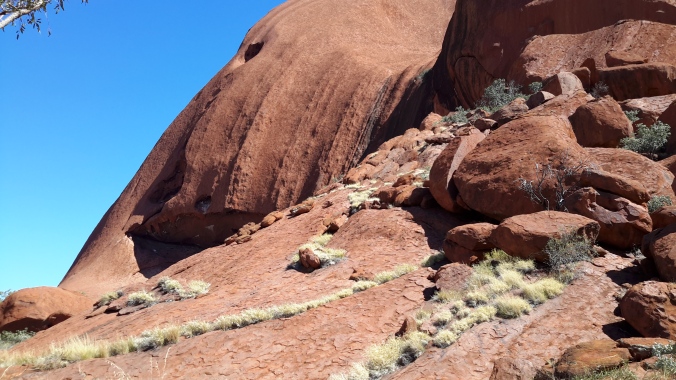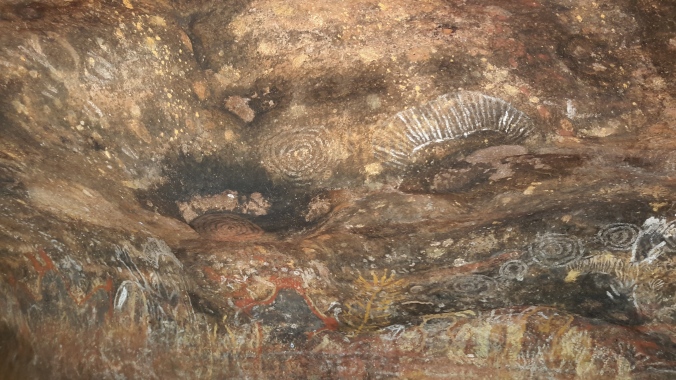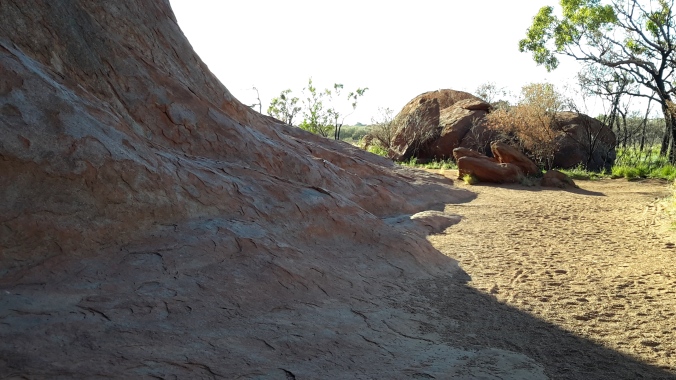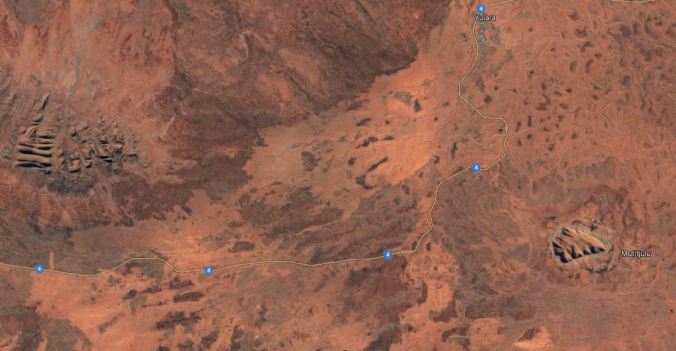My feet were so sore I felt like crawling, but mind over matter is the way forward and so, at the Mutitjulu/Kuniya carpark, I climbed onto the bus without a grimace but with a sigh of pleasure. We shuttled back to the Ayers Rock Resort. I resolved to get off at the first hotel, have one or more well-deserved sparkling wines, and suss it out as a potential place for dinner one evening.
I staggered off the bus at the Sails in the Desert Hotel, the most expensive of the three hotels in this little tourist town. I made it through an airy foyer with glass cases containing beautiful objects (none of which I had the energy to look at, regrettably) and collapsed into a comfortable chair in a light atrium. A waitress, travelling the world from France, kept me supplied with drinks while I logged into the WiFi and checked myself back into the electronic world. Apart from the fact I never wanted to stand on my feet again, I was chuffed. So profoundly happy. So excited about the things I had seen and experienced during the day.
I took a much larger volume of photos than appear in this blog, and there were people I met and other situations which have not made it into the blog (if I included everything, then it could be Christmas next year before this series of blog posts are complete). It is sufficient to say my walk around Uluru was a remarkably rich experience mostly because of the landscape and the way the changing light affected it, and for its associated aboriginal histories.
As I sat in the hotel I could see that I carried the dust as evidence of the walk – and even though I travelled back to Hobart in these boots that wonderful desert soil stayed attached. The photos show my greenish coloured leather boots as a shade of brown but it was red dust that coloured them. Images in earlier blogposts show the red soil –I will add another below to remind you. 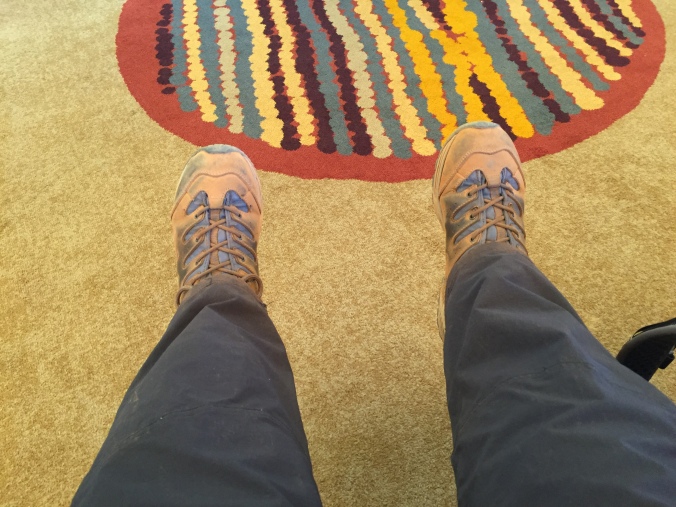

 Before leaving the Sails in the Desert Hotel I visited the restaurant and realised Betty and I could expect an excellent meal. However while we planned to eat there one evening, the range of eating options across the Ayers Rock Resort township meant we were attracted to other places and we never made it.
Before leaving the Sails in the Desert Hotel I visited the restaurant and realised Betty and I could expect an excellent meal. However while we planned to eat there one evening, the range of eating options across the Ayers Rock Resort township meant we were attracted to other places and we never made it.
Once the bus shuttled me back to the Outback Pioneer Hotel, Betty and I prepared for dinner at our Hotel’s restaurant, the Bough Restaurant. On offer – ‘For dinner, share in the spirit of outback Australia and enjoy a roast of the day served alongside a delicious buffet. Buffet selections offer international flavours that include vegetarian options, with a great selection of desserts to complete your meal.’ Unfortunately, dinner requires guests to be locked into a one-price deal so if you only planned to have a soup for example, this wasn’t possible unless you paid the full price. At that stage of our experience in the Ayers Rock Resort township, the fact that a hospitality training school (the National Indigenous Training Academy)for indigenous peoples from all over Australia was stationed in the complex and their students had work experience in various venues across town, was not registering with us. If we had known then we would have been more accommodating when we found offering a tip wasn’t straightforward, and when the bill for our evening meal was entered onto our room account incorrectly – all of which was solved later.
With the achievement of having walked around Uluru in mind, and fascinated by all of Betty’s local discoveries during the day, the excellent meal made me drowsy quickly. Our first full day in this region was over. Bed beckoned and I was soon unconscious.







